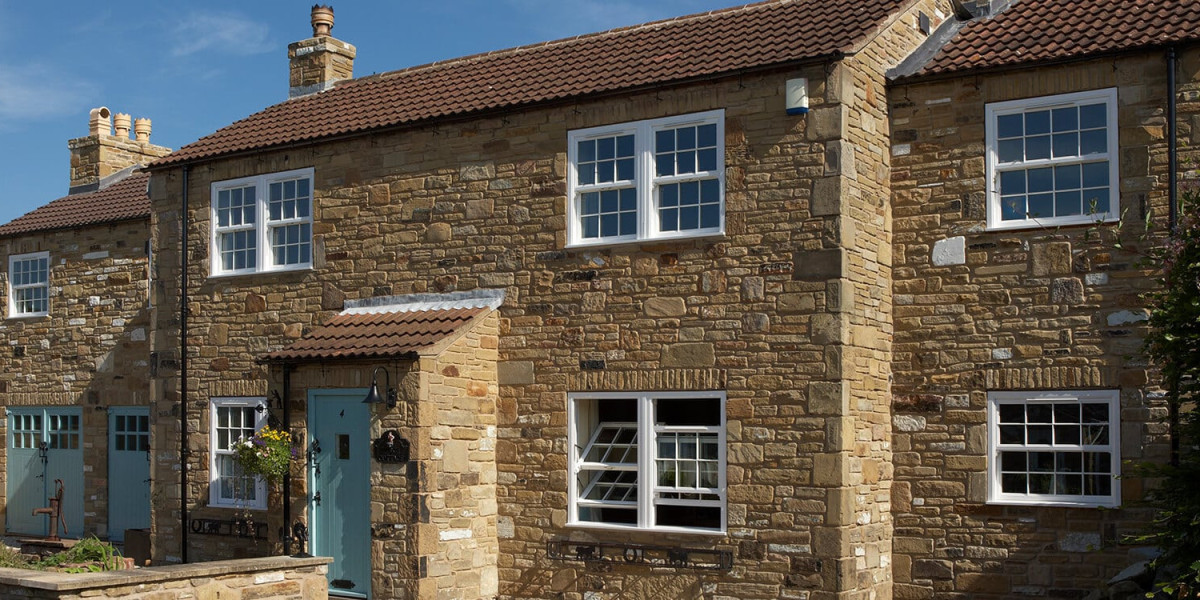Fresh air isn’t just for the great outdoors; it’s essential for your indoor environment too. With increasing concerns about air quality and energy efficiency, many homeowners are turning to innovative solutions, such as the Air Exchange System. This cutting-edge technology ensures that you breathe clean, fresh air while maintaining optimal temperature control in your home. Let’s dive into what an air-exchange system truly is, how it works, and why it’s becoming a go-to solution for modern households looking to improve their indoor atmosphere.
The Importance of Indoor Ventilation
Indoor ventilation plays a crucial role in maintaining a healthy living environment. Stale air can accumulate harmful pollutants, allergens, and moisture, leading to potential health issues. When spaces lack proper airflow, the risk of respiratory problems increases significantly. Good ventilation helps circulate fresh air while expelling contaminants, such as dust and volatile organic compounds (VOCs). This circulation not only enhances comfort but also reduces odors that can creep into your home over time.
Moreover, adequate indoor ventilation helps regulate humidity levels. Excess moisture can lead to mold growth and structural damage if left unchecked. Therefore, ensuring your home is well-ventilated is essential for both physical health and property maintenance. As homes become tighter with energy-efficient designs, prioritizing effective ventilation solutions becomes even more vital for overall well-being. Investing time into understanding these systems could be one of the best decisions you make for your household’s health.
What Is an Air-Exchange System and How Does It Work?
An air-exchange system is a sophisticated ventilation solution designed to enhance indoor air quality. It works by continuously exchanging stale indoor air with fresh outdoor air, ensuring that your living space remains healthy and comfortable. The core components include fans, ducts, and filters. These elements work together seamlessly. The system draws in outside air while expelling the less desirable indoor air.
Filters trap dust, allergens, and pollutants from incoming airflow. This process significantly reduces contaminants inside your home. Some models even incorporate heat exchangers to pre-condition incoming air. This means you can enjoy fresh ventilation without sacrificing energy efficiency during extreme weather conditions. Smart technology integration allows for efficient monitoring. Users can adjust settings based on preferences or through smartphone apps for optimal performance at any time of day or night.
Benefits Of Installing an Air-Exchange System in Your Home
Installing an air-exchange system in your home brings a multitude of advantages that enhance both comfort and health. First, it significantly improves indoor air quality by continuously replacing stale air with fresh outdoor air. This process helps reduce allergens, dust, and other pollutants. In addition to better air quality, these systems regulate humidity levels. By maintaining a balanced environment, they help prevent mold growth and protect your home’s structure from moisture damage.
Energy efficiency is another key benefit. Modern air-exchange systems are designed to minimize energy costs while providing optimal ventilation. They often come equipped with heat recovery features that retain warmth during the colder months. Having consistent airflow creates a more comfortable living space year-round. No more stuffy rooms or drafts—just fresh, invigorating air circulating throughout your home at all times!
How Air Exchange Ventilation System Improves Indoor Air Quality
Air exchange ventilation system is game-changers for indoor air quality. By continuously replacing stale air with fresh outdoor air, they help eliminate pollutants and allergens that can accumulate in enclosed spaces. These systems effectively reduce humidity levels as well. High moisture content can lead to mold growth and respiratory issues. With proper ventilation, you create a healthier environment free from excess dampness.
Moreover, modern units often include filters that trap dust, pollen, and other particles before the air circulates back into your home. This filtration process ensures that what enters your living space is cleaner and safer. By maintaining balanced airflow throughout your home, an air-exchange system also helps control odors. Whether it’s cooking smells or pet dander, these systems work diligently to keep the indoor atmosphere pleasant.
Energy Efficiency in Modern Air-Exchange Systems
Modern air-exchange systems are designed with energy efficiency at their core. They utilize advanced technology to minimize energy consumption while ensuring optimal ventilation. These systems often include heat recovery ventilators (HRVs) or energy recovery ventilators (ERVs). They transfer heat from incoming fresh air to outgoing stale air, reducing the need for extra heating or cooling. This makes them particularly effective in maintaining a stable indoor climate without excessive energy use.
Smart controls and sensors are also standard features. These adapt airflow based on occupancy and outdoor conditions, further enhancing efficiency. By incorporating variable-speed fans, modern units can adjust airflow according to real-time requirements as well. This prevents unnecessary strain on your HVAC system, leading to lower utility bills. Investing in an efficient air-exchange system not only improves indoor comfort but also contributes positively to environmental sustainability by lowering overall carbon emissions.
Choosing The Right Air Exchanger for Your Space
Selecting the right air exchanger for your space involves several key considerations. Start by assessing the size of your home. A unit that’s too small won’t effectively ventilate, while one that’s overly large may lead to energy waste. Next, understand your specific ventilation needs. If you have allergies or live in a polluted area, look for models with advanced filtration systems. This can significantly enhance indoor air quality.
Pay attention to noise levels as well. Some units operate quietly, making them ideal for bedrooms and living areas. Consider energy efficiency ratings. Opting for an ENERGY STAR certified model can save on utility bills while providing maximum comfort in your environment. Research customer reviews and consult professionals when needed to ensure you make an informed choice tailored to your unique situation.
Installation And Maintenance of An Air-Exchange System
Installing an air-exchange system requires careful planning and precision. It’s essential to assess your home’s layout and airflow needs before diving into the installation process. Professional assistance can make a significant difference, ensuring that the unit is optimally placed for maximum efficiency. Once installed, maintenance plays a crucial role in keeping the system running smoothly. Regularly check filters for dirt buildup; clean or replace them as needed to maintain indoor air quality.
Inspect ductwork periodically for leaks or blockages that could hinder performance. This proactive approach not only enhances efficiency but also extends the lifespan of your system. Don’t forget about seasonal checks! Preparing your air-exchange unit before heavy usage periods, like winter or summer, ensures it operates effectively when you need it most. Keeping up with these simple tasks can lead to long-term benefits for both health and energy savings.
Common Misconceptions About Air-Exchange Systems
Many people have misconceptions about air-exchange systems that can lead to misunderstandings. One common myth is that these systems are noisy and disruptive. However, modern units operate quietly, providing fresh air without the intrusive sounds associated with older models. Another misconception is that installing an air-exchange system will make homes too cold in winter or overly warm in summer. In reality, these systems work efficiently with your home’s heating and cooling setups to maintain a comfortable temperature year-round.
Some believe they require complex maintenance. While regular checks are essential for optimal performance, most tasks involve simple filter replacements. There’s a notion that air-exchange systems are only necessary in areas with poor outdoor air quality. On the contrary, even in cleaner regions, they help manage humidity levels and eliminate indoor pollutants effectively.
Energy Efficiency and Cost Savings with An Air Exchange Unit
An Air Exchange Unit not only enhances indoor air quality but also plays a significant role in energy efficiency. By continuously exchanging stale indoor air with fresh outdoor air, these systems help maintain optimal temperature and humidity levels. This process minimizes the need for excessive heating or cooling. As a result, homeowners notice reduced energy consumption and lower utility bills.
Modern units often come equipped with heat recovery features that capture escaping warmth during winter months or coolness in summer. This technology ensures that your home stays comfortable without straining your HVAC system. Investing in an air-exchange unit can lead to substantial long-term savings. Families can enjoy cleaner environments while keeping their budgets intact as energy costs decrease over time.
Air-Exchange Systems Vs. Traditional Ventilation: Key Differences
Air-exchange systems and traditional ventilation methods serve the same fundamental purpose: promoting fresh air in indoor spaces. However, they achieve this goal through very different mechanisms. Traditional ventilation often relies on passive airflow, using windows or vents to allow outdoor air to enter. While simple, this method can be inconsistent. It depends heavily on weather conditions and fails to filter out pollutants effectively.
In contrast, an air-exchange system actively manages airflow by mechanically exchanging stale indoor air with fresh outdoor air. These systems come equipped with filters that remove allergens and contaminants before circulating clean air throughout your home. Another key difference lies in energy efficiency. Air-exchange systems are designed to minimize heat loss during the exchange process, leading to reduced energy costs over time compared to traditional approaches that may leave homes drafty and uncomfortable. The choice between these two options can significantly impact comfort levels and overall indoor air quality.
Integrating Whole House Air Exchanger with Heating and Cooling
Integrating a Whole House Air Exchanger with your heating and cooling system creates a harmonious indoor environment. This setup enhances the efficiency of both systems, ensuring optimal performance year-round. When these systems work together, stale air can be effectively replaced without compromising temperature control. Fresh air enters while the conditioned air remains in place, resulting in balanced humidity levels.
Moreover, many modern units feature innovative technology that adjusts ventilation based on real-time climate conditions. This means you enjoy fresh airflow when needed most. Homeowners also notice reduced energy bills as the workload on HVAC systems decreases. A seamless integration not only boosts comfort but also promotes healthier living spaces by continuously refreshing indoor air quality. Investing in this combination offers long-term benefits for both your home and your family’s well-being. It’s an innovative solution that prioritizes efficiency while tackling common indoor pollutants effectively.
Cost Savings from Efficient Air-Exchange Systems
Investing in an efficient air-exchange system can lead to significant cost savings over time. These systems are designed to optimize energy use while maintaining optimal indoor air quality. By continuously exchanging stale indoor air with fresh outdoor air, they reduce the need for excessive heating or cooling. This efficiency translates into lower utility bills each month.
Additionally, modern units often come equipped with heat recovery ventilators (HRVs) that pre-condition incoming air. This feature minimizes energy loss and further enhances savings on your HVAC costs. Long-term benefits include decreased wear and tear on your heating and cooling equipment due to less strain from poor ventilation. A well-maintained system also extends the life of these appliances, protecting your initial investment. Homeowners may also find their homes more comfortable year-round, decreasing the temptation to crank up those thermostats during extreme weather conditions.
Conclusion
An Air Exchange System can transform your indoor environment, creating a healthier space for everyone. With proper ventilation, you can significantly reduce indoor pollutants and allergens. Improved air quality leads to better health and increased productivity. Investing in this technology not only enhances comfort but also supports energy efficiency. The right system can cut down utility bills while ensuring fresh air flows throughout your home.
FAQs
What is an Air Exchange System?
An Air Exchange System is designed to replace stale indoor air with fresh outdoor air while minimizing heat loss or gain. It operates by utilizing fans and ductwork.
How does an air-exchanger improve indoor air quality?
By continuously bringing in fresh outdoor air, these systems help dilute pollutants, allergens, and excess humidity that may accumulate indoors.
Are there maintenance requirements for an air-exchange system?
Yes, regular maintenance involves cleaning or replacing filters and ensuring ductwork remains unobstructed for optimal performance.
Can I install one myself?
While DIY installation is possible for handy individuals, it’s usually best to hire professionals who can ensure the unit functions efficiently and meets local building codes.
| Related Business Listings |
| Contact Directory |
| Local Business Profiles |








